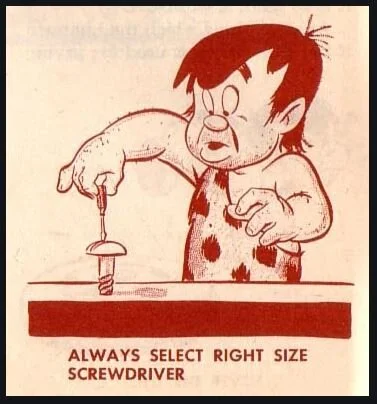Growing up and attending Junior High School (grades 7-8) in the Midwest during the 60's, I was enlightened by the "Primitive Pete" films as part of our Shop (Industrial Arts) curriculum. Primitive Pete always used the wrong tool for the job - often dangerous; rarely productive. For Primitive Pete, it never worked out but oddly enough, in the world of medicine, sometimes using the wrong tool can be very productive and effective for an improvement or even a cure. Technically, this is called using a drug "off label" (meaning not for the intended, proven or prescribed purpose as carefully outlined on the label). Sometimes risky, sometimes serendipitous, sometimes revolutionary. Here are just a few examples: some common-place, some surprising, some revolutionary.
Aspirin (with us since the 1890's) seems to be the magic cure-all for everything - well, not everything. Beyond fever and general pain reduction, aspirin has proven to be very effective for blood clots and DVT’s when taken in the very specific 81mg dose. Add me to the list of users who are impressed with this odd yet effective application.
Steroids have gotten a bad rap over the years for their mis-use in athletics and their proclivity for contributing to aggression (see "Roid Rage" - May 10, 2020). Neither are necessarily deserved, but nonetheless not unwarranted. That said, I have recently discovered, during my introduction to back pain, that steroids can have a very positive effect on relieving soreness - at least associated with sciatica; in my case. The same day that I recently received my usual dose of 'roids as part of my cancer cocktail, I also enjoyed some unexpected (though much-appreciated) sciatica discomfort reduction - though albeit temporary for just the day.
But the value of steroids doesn't stop there (besides their specific medical purpose of reducing inflammation). A cheap and readily available steroid drug reduced deaths by a third in patients hospitalized with Covid-19 in a large study. This is not the cure-all we are seeking, but it is yet another example of how a drug intended for any number of other uses can somehow emerge as having value for something completely different - even if offering the slightest amount of relief or remedy.
In the 50's thalidomide was innocently prescribed to relieve morning sickness, but quickly turned out to cause horrible birth defects (and was discontinued). Today, by an incredible contrast, it is used to treat and prevent a skin disease caused by leprosy. It can also be used with dexamethasone to treat Multiple Myeloma. Due to its well-documented sordid past, production and prescription of any thalidomide-based drugs are heavily regulated, but what an incredible transformation for a medication: to evolve from zero to hero.
Science (medical science) gives us tools every day to use for attacking disease (we're in the midst of that greatest battle of our lives right now). Most times those medicines come as a result of years of research and study. Other times, they sprout up out of nowhere - the brainchild of happenstance or accident. But whatever the source, when efficacy is attained, we are fortunate to add another arrow to the quiver / another weapon to the onslaught / another ray of hope to the afflicted.




